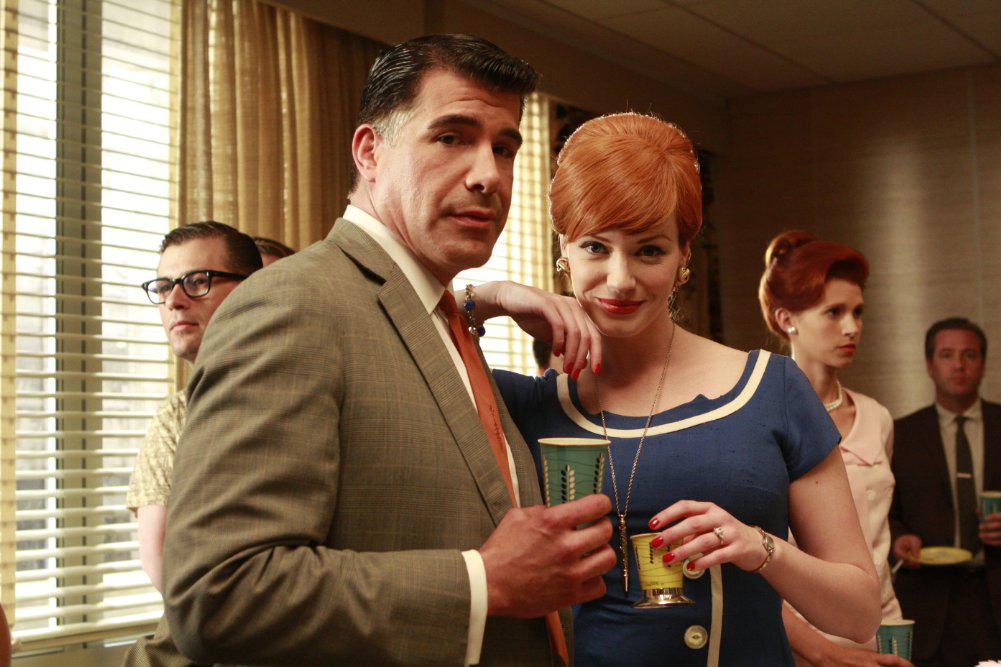More often than not, the most satisfying stories are those that end neatly—every plot resolved, each character’s arc completed. In this regard, Mad Men, which aired its final episode on May 17, surely frustrated many of its longtime admirers. Over the course of its seven seasons, the series accumulated more plots and characters than its creators could manage. Or at least more than they could incorporate into the show’s surprisingly meditative conclusion.
If you left the finale frustrated by its omissions, you may not be alone. Indeed, the show’s own writers may have been right there with you. Reporting from a Writer’s Guild Foundation panel with the show’s writers, Entertainment Weekly’s Anthony Breznican tweeted a picture of what he described as Mad Men showrunner “Matthew Weiner’s ‘Wish List’ of plot points to cover before the finale.” If it’s real—and nothing about Breznican’s Twitter feed suggests it isn’t—the list offers a trove of insights into the process behind one of television’s most important shows.
A handful of the items on the list are crossed off, suggesting that Weiner considers them to be resolved in one way or another. The name Duck Philips, for example, has a strike through it, presumably because the character makes a brief but important appearance near the conclusion to help Pete Campbell settle on his destiny. Perhaps Weiner was fonder of Duck than you might expect. Other names that appear are less surprising. Some fans might lament the inclusion of the name of Don’s former lover Rachel Menken. Having largely turned its gaze from her after its second season, the show returns its attention to her in its seventh, with sad consequences. In light of her fate, perhaps we should be glad that the item that reads “Dr. Faye,” in reference to the character unseen since the finale of Season 4, isn’t crossed off.
Even some of the items that are crossed out inspire more questions than answers. The one that reads “Hawaii … Tiki style” presumably refers to the sixth season opener, but the real significance of this sequence—why it was one of the things the writers wanted “to Deal With Before the Series Ends”—goes unexplained. (Perhaps they just wanted to touch on the post–World War II explosion of Tiki culture?) Similarly, Weiner was apparently satisfied enough to ink over the item that reads “Television,” though it’s hard to say how exactly the show concluded its treatment of its own medium. And then there are those like “Ken’s Writing,” that feel almost perfunctory, but that may yet have a deeper significance for the show’s creators.
Ultimately, it’s the things Weiner left unfinished that will sting most for Mad Men’s fans. It turns out that Weiner, too, wondered about the fate of Salvatore Romano (“Sal—what happened to him?”), Sterling Cooper’s art director, who is forced out of the firm after rejecting the advances of one of its most prominent clients in Season 3. For some—especially those who held out hope that the closeted Sal would find new freedom in the post-Stonewall climate of the last episodes—his failure to reappear was a major disappointment. Likewise, the list suggests that Weiner had intended to return to Sal’s tormenter, Lee Garner, Jr., though he never returned after the fourth season. Just as Mad Men denied Sal redemption, it refused to allow its viewers to witness Lee’s comeuppance.
Even as the list calls attention to the ways Mad Men’s closing episodes couldn’t please everyone, we should be glad that some loose ends weren’t tied up. Weiner’s series approached something like the real, and as with all stories that feel true, it borrowed some of its weight from the parts of itself that must go unspoken.
